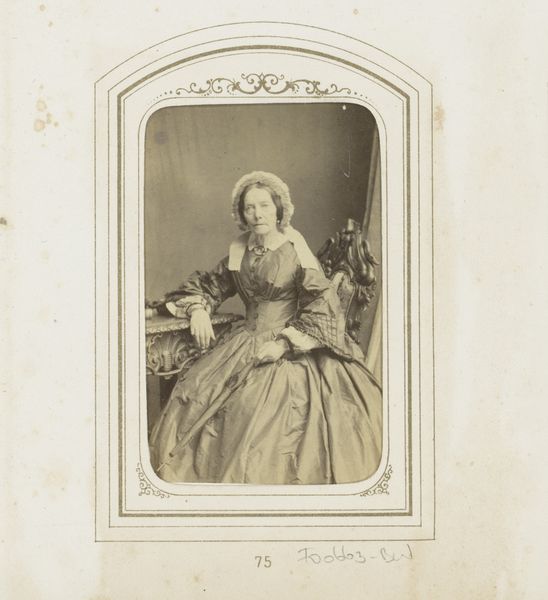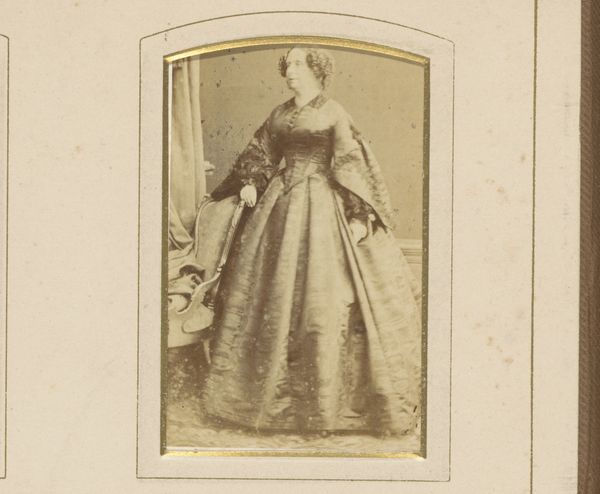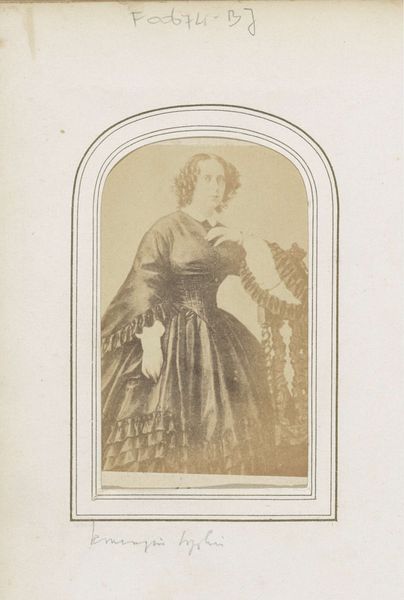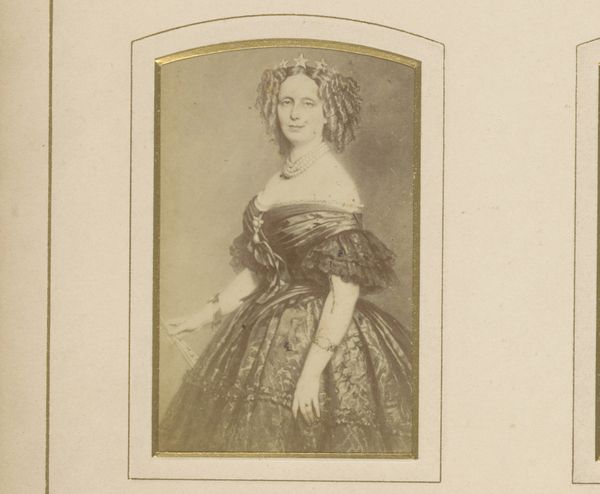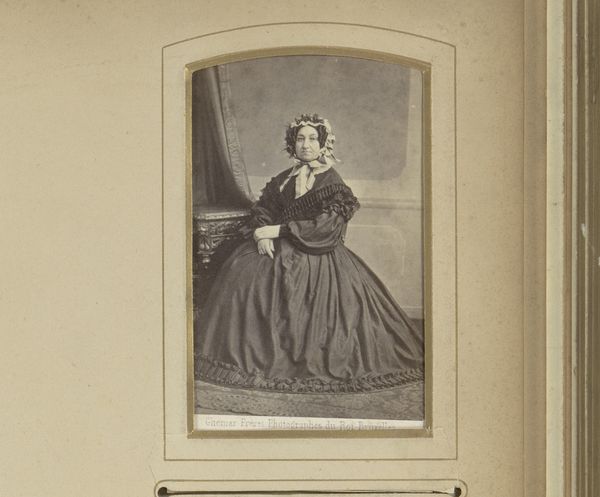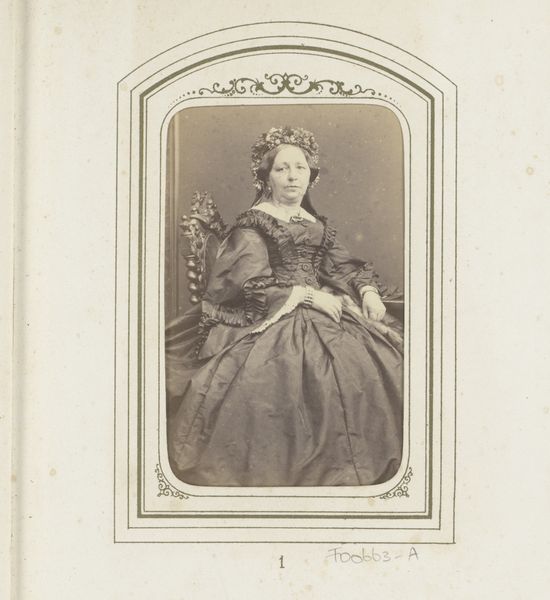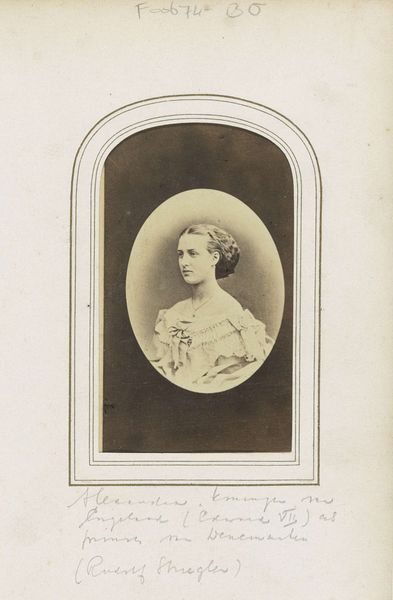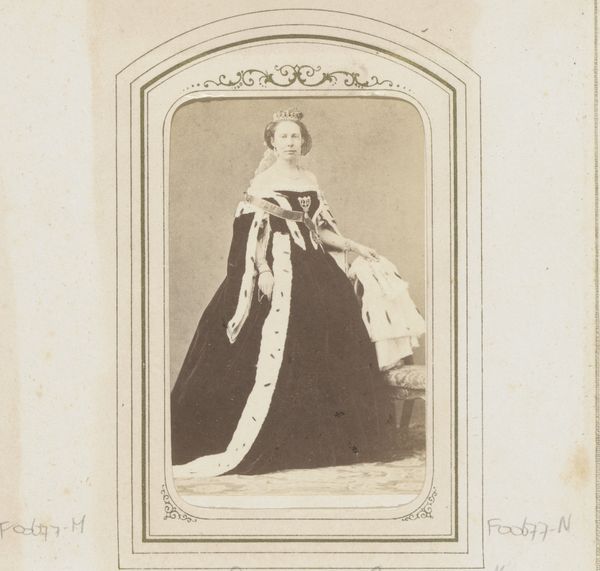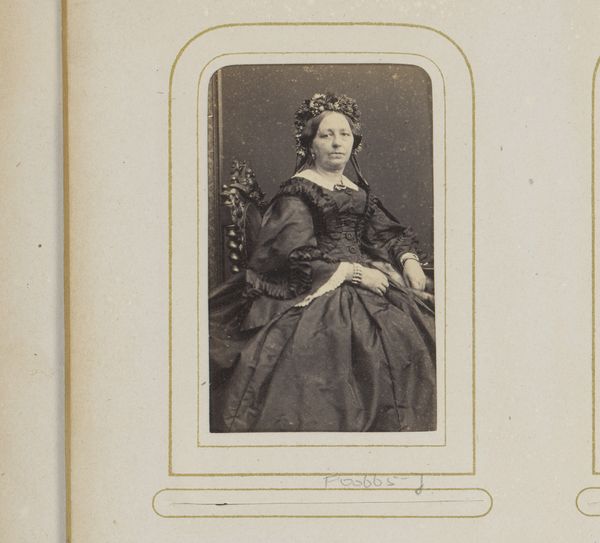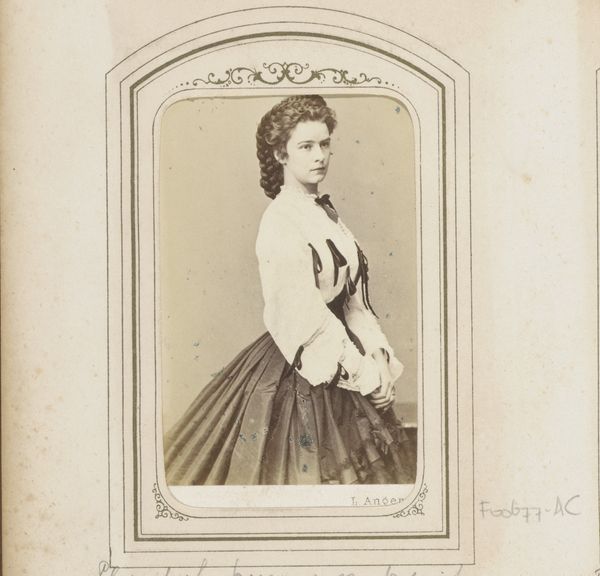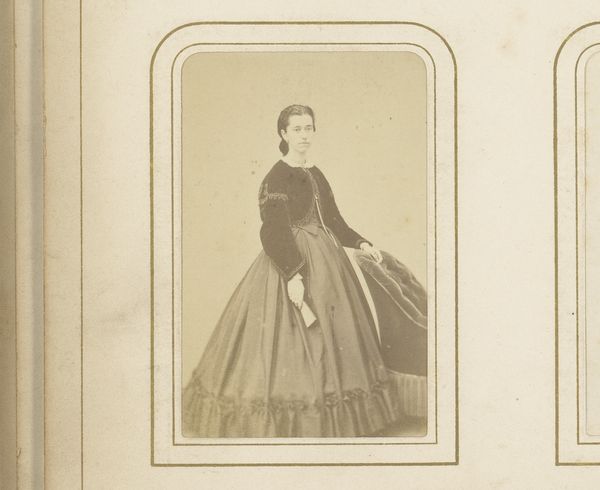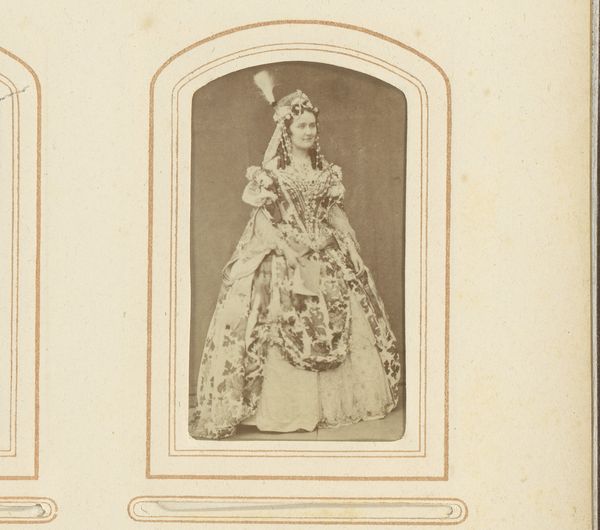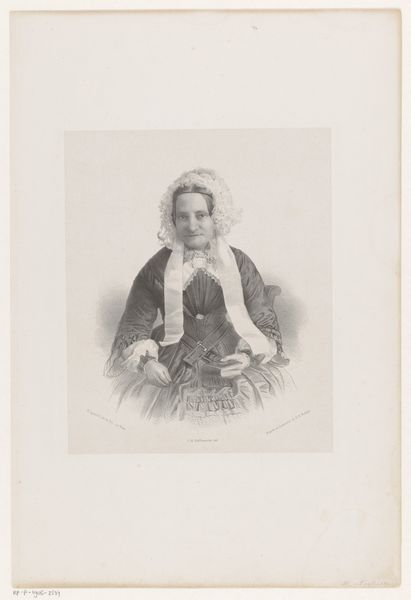
Portret van Sophia Frederica Mathilda, koningin der Nederlanden 1860 - 1877
0:00
0:00
andriesjager
Rijksmuseum
#
pencil drawn
#
aged paper
#
toned paper
#
light pencil work
#
pencil sketch
#
charcoal drawing
#
charcoal art
#
pencil drawing
#
watercolour illustration
#
watercolor
Dimensions: height 83 mm, width 52 mm
Copyright: Rijks Museum: Open Domain
Editor: This is a portrait of Sophia Frederica Mathilda, Queen of the Netherlands, made sometime between 1860 and 1877 by Andries Jager. It looks like it's a drawing made with pencil and perhaps charcoal. The aged paper really contributes to the somber mood. What do you see in this piece, especially concerning its material composition? Curator: This piece strikes me first through its means of production. The use of pencil and charcoal – readily available materials, even then – contrasts sharply with the subject matter: a queen. This immediately suggests a democratization of portraiture, moving away from oil paints and commissioned court artists. Consider the labor involved in creating such a detailed drawing compared to the burgeoning technology of photography at the time. How might the choice of 'humble' materials and meticulous handiwork be a commentary on royalty itself, perhaps even a critique of their perceived detachment from everyday labor? Editor: That's interesting. I hadn't thought about the materials as being deliberately chosen to contrast with the subject’s status. So, it is like drawing closer to everyday people with everyday means? Curator: Precisely! The materials and method actively shape the meaning. Furthermore, the "aged paper" isn't just an aesthetic quality; it speaks to the physical history of the object, its survival, and the ways it's been consumed and preserved over time. Were these portraits like photographs accessible to more commoners, a cheaper alternative? What were the commercial possibilities, and did they offer the artist a different kind of income? Editor: That is a great way to put it all together. It highlights that what art is made of and who has access to it are as important as what it depicts. Curator: Absolutely. It's a reminder that art, even portraiture, is embedded in a network of social relations, economic conditions, and material processes.
Comments
No comments
Be the first to comment and join the conversation on the ultimate creative platform.
